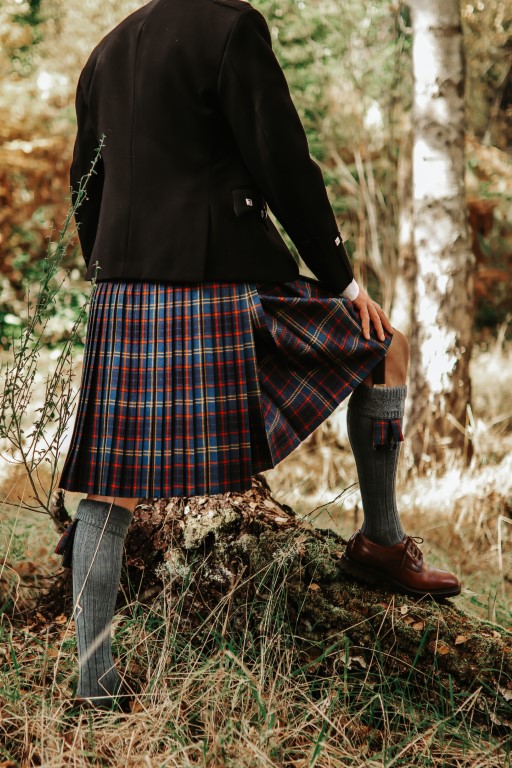The Stone of Destiny: A Symbol of Scottish Sovereignty

We recently had a great time at the Scottish Game Fair at Scone Palace in Perth, where we had a stall. While there, we found ourselves discussing the Stone of Destiny—something that, to be honest, I’ve always been aware of, but I realised I didn’t know much about in detail.
As fate would have it, Hannah is currently making a kilt using the Stone of Destiny Tartan, woven by The House of Edgar. Given this connection between the legendary stone and our current project, I felt it was particularly worth writing about it.
The Stone of Destiny is one of Scotland’s most revered symbols of sovereignty. For centuries, the ancient, rectangular block of red sandstone has been at the centre of Scottish coronations, symbolising the legitimacy and continuity of Scottish kingship. Its history is filled with drama and intrigue, reflecting the complex relationship between Scotland and England and highlighting Scottish identity’s enduring spirit.
There are various tails associated with the stone. For example (my favourite), one has biblical origins, with some claiming it is the very stone upon which Jacob rested his head in the Book of Genesis. It is said to have travelled from the Holy Land to Egypt, Spain, and Ireland before finally arriving in Scotland, where it was housed at Scone Abbey in Perthshire. Here, it became the coronation stone for Scottish kings, a practice believed to have started in the 9th century.
The Stone’s significance was so profound that when England’s King Edward I invaded Scotland in 1296, he seized it and took it to Westminster Abbey in London as a symbol of England’s dominion over Scotland. It was placed beneath the Coronation Chair, where it remained for over 700 years, used in the coronation of English and later British monarchs. This act was a potent symbol of the English crown’s claim to sovereignty over Scotland and deeply embedded the Stone into the story of Scottish resistance and identity.
Then, though and behold, the Stone’s journey took a dramatic turn on Christmas Day in 1950 when four Scottish students covertly removed it from Westminster Abbey and returned it to Scotland! The act was celebrated as a bold assertion of Scottish nationalism. After several months, the Stone was recovered and returned to Westminster Abbey, but the event reignited Scottish pride and a growing movement for greater autonomy.
On 30th November 1996 (St. Andrews Day), in a gesture of goodwill, the British government returned the Stone of Destiny to Scotland, to Edinburgh Castle, where it resided until 2019 when it was relocated to Perth Museum, and this is where it is currently. However, it temporarily made its way back to Westminster Abbey for the Coronation of Charles
III in April 2023.
The Stone of Destiny is not just a relic from the past but a powerful symbol of Scotland’s enduring quest for self-determination. Its history is a testament to the Scottish people’s resilience and ongoing struggle to preserve their national identity within the United Kingdom. The Stone’s legacy continues to inspire, reminding us of the deep roots of Scottish sovereignty and the pride of a nation that has fought to maintain its unique place in history.
Contact us for more details regarding the kilts we can supply.
